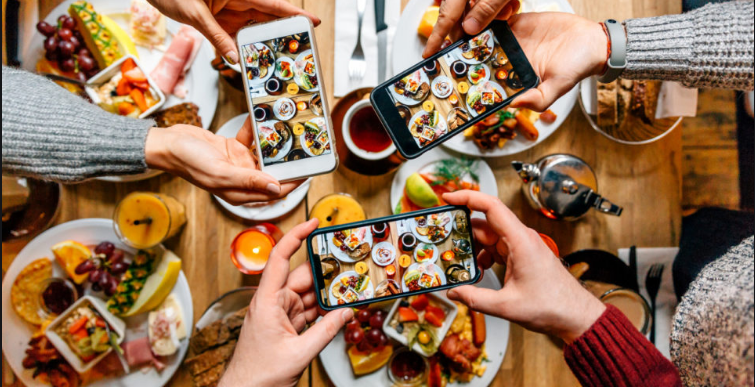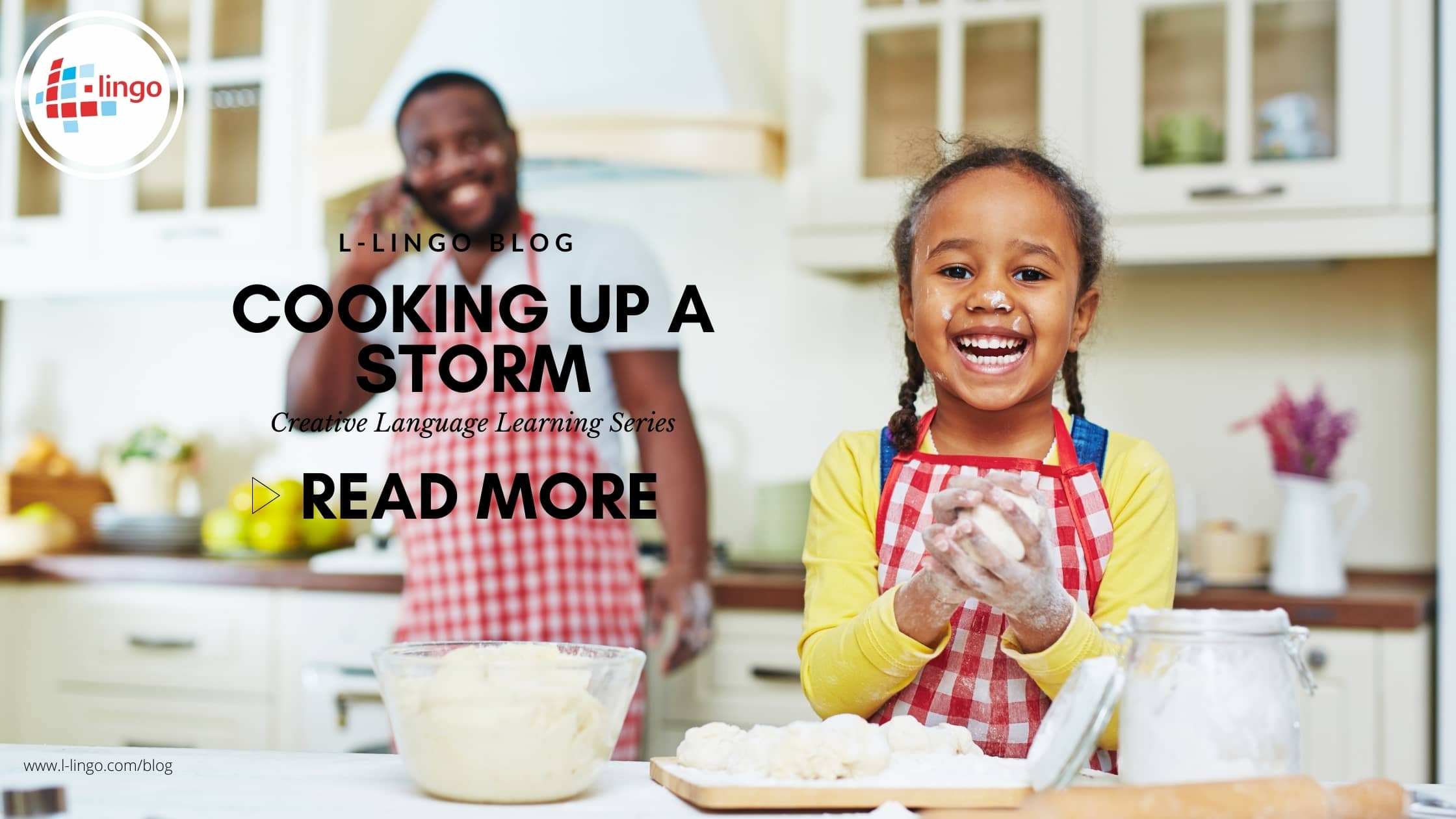Grab a pot, your dictionary, and some seasonings because this article is all about cooking in your target language!
Many a time I find myself screwing with foreign recipes, and more often than not, the recipe doesn’t turn out like how it should. But that’s okay! It’s always a learning experience playing with foreign ingredients in a foreign language, especially if you’re living in the target country.
Cooking Is An Experience
Seriously, cooking is such an enjoyable experience you guys don’t even know the half of it. Watching the flames incinerate your dough, seeing the first bubbles in a pot of boiling water, flipping the meat over in the frying pan; it’s all one big incredible experience, an experience that can also be enjoyed in your target language.
From cooking in your target language you’ll mainly be learning how to read and follow directions. This is an important skill when it comes to active tasks to perform in your target language.
Not to mention, it’s fun. If you’re running out of ways to enjoy studying your target language, associating it with something meant for survival purposes is a good way to keep things fresh.

The Shopping Trip
This, of course, works best if you’re already living in your target country, but there are still methods that can make it effective. You can’t cook without ingredients, so securing your ingredients would be the first step. However before you gas up your car and drive all the way to the supermarket, you want to have a nicely laid out grocery list in your target language. I mean going with the flow is nice too but, you won’t really have a chance to learn actively. By making a list you target certain keywords you want to learn and shopping for them makes the memory stick!
When deciding your dinner menu, be sure to pick something “exotic” to prepare. The word “Exotic” in this sense means, something with more than 3 ingredients, and more than 6 steps in the recipe book. By doing this you’ll be sure to add that extra spice to your language learning while cooking.
Side Note: Taking pictures of things in supermarkets may be looked down on depending on where you live, so you may want to skip the whole “I need a photo” part.
The most important thing during your shopping trip is that you make an effort to participate in active learning. This means taking the time to look up words you don’t know in a dictionary or asking a store attendant to explain the products. Normally, you want to do this in the target country for maximum effect, but it can still work anywhere.
I know it’s tempting to pretend like you don’t know the language and just throw anything in your shopping cart, but you have to read people! What sense does it make knowing a language and not reading it when you have the opportunity to? Seems like a waste to me. So, be sure to open your eyes, and your brain and read those nutrition labels, product names, and discount deals.
IDEA: Any Tom, Dick or Harry can go into a supermarket and find the aisle labelled ‘produce & dairy’ BUT it takes a real language learner to walk into a local market and ask questions. Seriously if you’ve ever been in a local market, then you know what I’m talking about; the endless amount of clutter, food variety and lightning-fast bargaining makes for the ultimate immersive experience and greatly enhances your communication skills.

In The Kitchen
*Queue scary music* DUN DUN DUNNNNNN! You’re in the kitchen now, the moment of truth has come. What will you do with all those ingredients you purchased from the store? Cook em? Throw ‘em in the fridge? Give ‘em away? All of the above?
While you can do either of those, for this method I recommend you cook them. Find a recipe online from a cooking database in your target language and follow through. The recipe should be easy enough to follow, but hard enough that you need to take your time. Sure you can just unwrap everything, heat up some oil and fry it until it stops moving, but where’s the fun in that? Cooking is an art and when combined with language learning it becomes a finely tuned craft. That’s just a different way of saying it becomes Art+++.
But anyway, you want to take your time when following the recipe for a number of reasons:
Still Learning
Yeah you’re cooking up a meal, but you’re also learning. Unless your on some special speed learning program/technique/method you don’t want to rush this experience. Just take your time and read through everything and take notice of things that you didn’t previously know before.
You’re Gonna Eat It
There is a 90% chance that you’re going to eat this food. I don’t know many people who throw away their meal unless they totally ruined it and that rarely happens… I think. But, you want to have a wholesome cooking and eating experience, that’s the pleasant part about cooking in the first place – eating.
Besides from these obvious reasons why caution is important there’s also the cognitive benefits like:
Practising your multitasking skills
Language learning involves the use of speaking, listening, reading and writing. Cooking involves reading, listening (to the oven go ding), hand-eye coordination, precision, etc. Yeah, they’re in two different worlds but you get the benefit of learning how to handle things in high-stress situations.
Learning measure words while practising your grasp on numbers
Numbers for some language learners are a grey area. It’s like we want to learn them, but we don’t want to make an effort to learn them. Things can get so disorganized so quickly. Cooking can fix this lack of attention span issue. Buy some measuring cups with words engraved in your target language next to the numbers. You can also use the nutrition label percentages on the back of packages and boxes in some cases.
Enhanced reading skills
The main take away from cooking in your target language is reading. You’ll be reading your long, complicated recipes and applying those instructions to your meal preparation.
Eating Your Food
This is where things get fun(er). The best part of cooking is getting to eat your meal! Savouring the yummy food that you’ve worked so hard to prepare is a big deal. Use this time to express your love for the meal in your target language. If you’re not familiar with descriptive adjectives to effectively do this, well now you have a chance to learn some.

Flavourful Adjectives
There are so many cool words you can learn while cooking and the best part about these words is that they’re what we call flavorful adjectives.
Flavorful adjectives are those adjectives that pack an extra punch when describing something. They’re fantastic at raising eyebrows, turning heads and just making conversation a lot more…well, flavorful.
Here are some flavorful adjectives:
smokey, spicy, zing, savoury, meaty, cheesy, salty, well-seasoned, caustic, divine, delight, ambrosia, dulcet, flavorful, mellow, mouthwatering, rank, rancid, pickled, peppery, sabid, sharp, sour, succulent, treacly, tasty, zesty, acidic, sweet, burnt, heavenly, harsh, full-bodied, fruity,dry
Making It All Come Alive
In addition, you can take pictures, post them to your Instagram feed and make mouthwatering captions in the language you’re learning. We’re a huge fan of emojis at L-Lingo so we encourage you to throw some in

Just made this smashing⭐ 5 star course⭐ 🇮🇹Italian🇮🇹 meal, with a banana on the side.😊
#eatinghealthyall2019 #🇮🇹italy2019 #🍷wheresmywine🍷#livingthelife😊#italian#goingplaces
Enjoy the meal, and all the words you’ve learnt.





I paid for an Llingo account a few years ago and now it seems to be disabled. Why?
Hi Robert,
I’m sending you an email now with some details. 🙂 I can certainly help you out here.